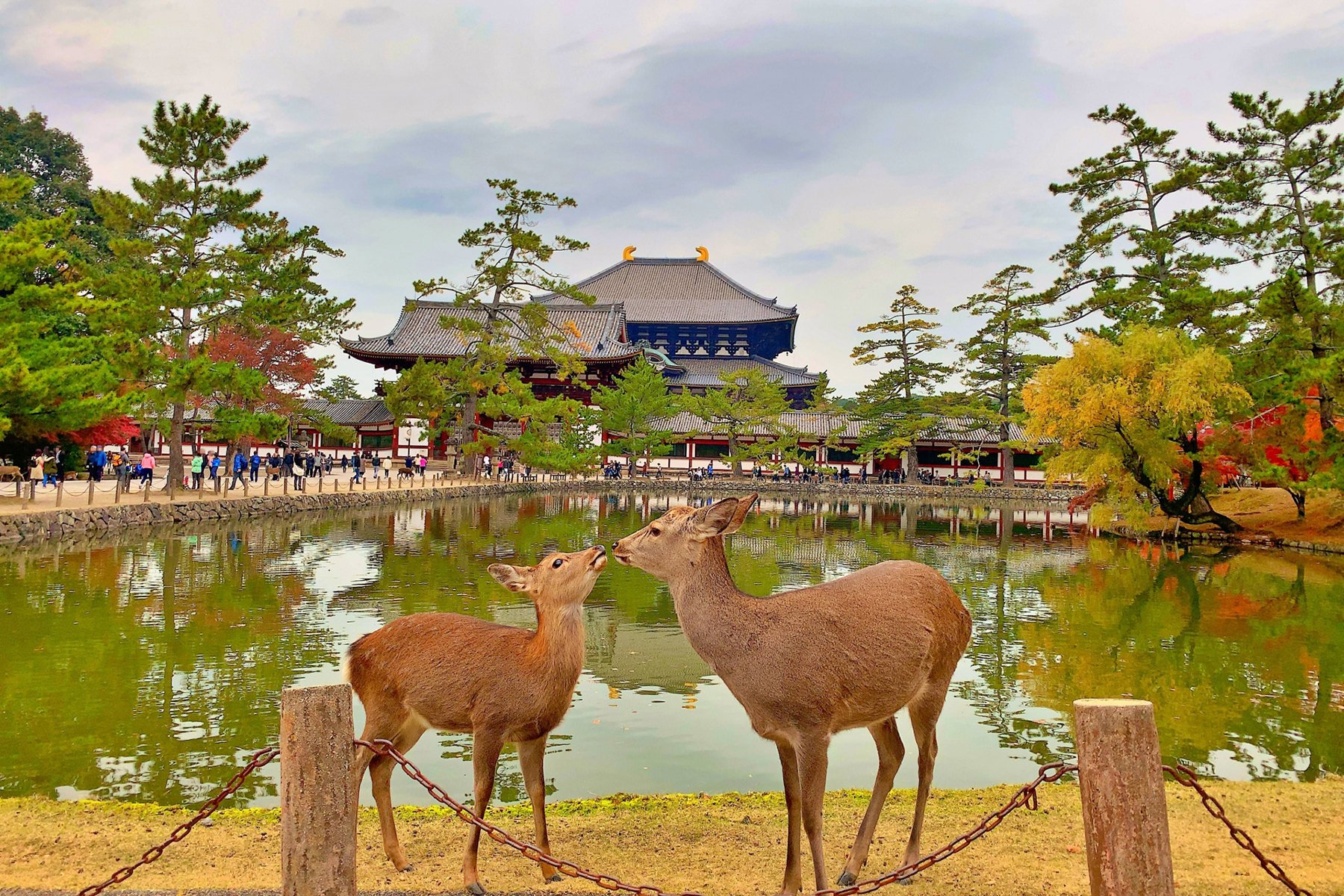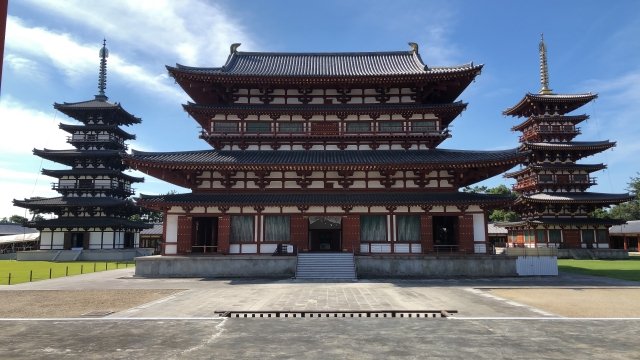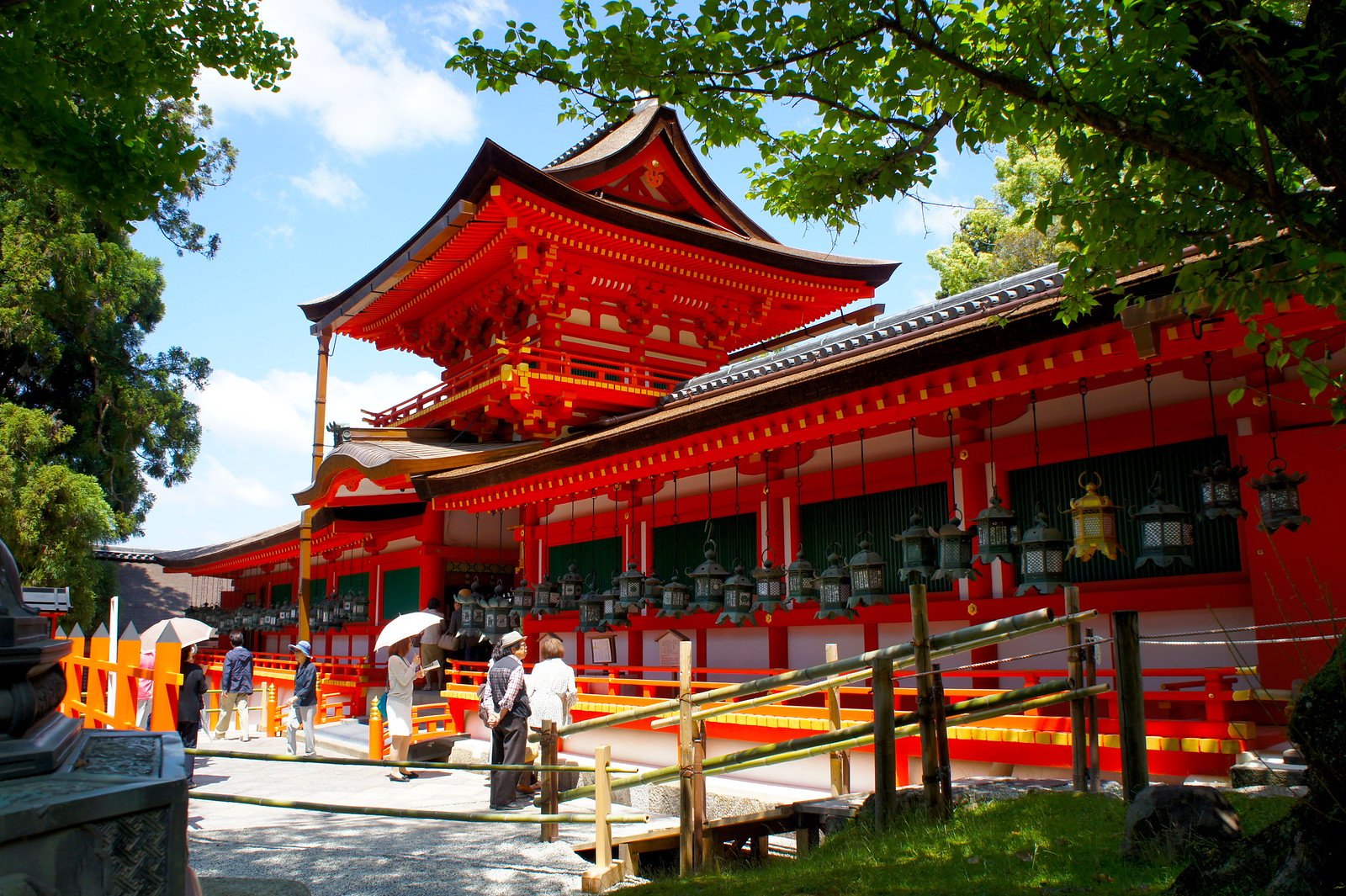 Image 1 of 7
Image 1 of 7

 Image 2 of 7
Image 2 of 7

 Image 3 of 7
Image 3 of 7

 Image 4 of 7
Image 4 of 7

 Image 5 of 7
Image 5 of 7

 Image 6 of 7
Image 6 of 7

 Image 7 of 7
Image 7 of 7








1 Day Nara Private Tour (Osaka/Kyoto departure) with Licensed Guide
Full-Day / Applox. 8 Hours
From USD $ 450 / group
-Tour Dates: Everyday (Based on the availability)
-Plus booking fee per reservation
Full-Day / Applox. 8 Hours
From USD $ 450 / group
-Tour Dates: Everyday (Based on the availability)
-Plus booking fee per reservation
Full-Day / Applox. 8 Hours
From USD $ 450 / group
-Tour Dates: Everyday (Based on the availability)
-Plus booking fee per reservation
Your guide will help you efficiently enjoy a full-day walking tour of Nara and introduce both modern and traditional sides of this dynamic and ancient Japanese city.
Nara's proximity to Kyoto and Osaka, and its rich collection of traditional sites, make it an ideal destination for a day trip from either of its larger neighbors. Your private guide can help you efficiently enjoy a full-day walking tour of this ancient Japanese city.
You can start your day at your hotel in Osaka, Kyoto. Let us know what you would like to experience and we will customize Nara day tour that's best for you!
-
Private Nara Tour with Government Licensed Guide & Vehicle (Kyoto Departure) :
From USD $930 / group (Up to 4 people)
From USD $1,080 / group (Up to 7 people)
-
・Customizable Tour of your choice of 3-4 sites from 'What to expect' list
・Meet up with guide in Osaka/Kyoto
・Licensed Local English Speaking Guide, Use of public transportation
-
・Food and drink (for yourself)
・Entrance fees to attractions where applicable
・Transportation fees (for yourself)
*Applox. $5-$10/way from Osaka/Kyoto area
・Any other personal expenses
Choose 3 to 4 must-sees from the list below to create your tour
■ Todaiji
Todaiji ("Great Eastern Temple") is one of Japan's most famous and historically significant temples and a landmark of Nara. The temple was constructed in 752 as the head temple of all provincial Buddhist temples of Japan and grew so powerful that the capital was moved from Nara to Nagaoka in 784 in order to lower the temple's influence on government affairs.
Until recently, Todaiji's main hall, the Daibutsuden (Big Buddha Hall), held the record as the world's largest wooden building, despite the fact that the present reconstruction of 1692 is only two thirds of the original temple hall's size. The massive building houses one of Japan's largest bronze statues of Buddha (Daibutsu). The 15 meters tall, seated Buddha represents Vairocana and is flanked by two Bodhisattvas.

■ Nara Park
Nara Park is a large park in central Nara. Established in 1880, it is the location of many of Nara's main attractions including Todaiji, Kasuga Taisha, Kofukuji and the Nara National Museum. It is also home to hundreds of freely roaming deer.

■ Kasuga Taisha Shrine
Kasuga Taisha is Nara's most celebrated shrine. It was established at the same time as the capital and is dedicated to the deity responsible for the protection of the city. Kasuga Taisha was also the tutelary shrine of the Fujiwara, Japan's most powerful family clan during most of the Nara and Heian Periods. Like the Ise Shrines, Kasuga Taisha had been periodically rebuilt every 20 years for many centuries. In the case of Kasuga Taisha, however, the custom was discontinued at the end of the Edo Period.
Beyond the shrine's offering hall, which can be visited free of charge, there is a paid inner area which provides a closer view of the shrine's inner buildings. Furthest in is the main sanctuary, containing multiple shrine buildings that display the distinctive Kasuga style of shrine architecture, characterized by a sloping roof extending over the front of the building.

■ Mount Wakakusayama
Mount Wakakusayama is the grass covered mountain behind Nara Park, located between Todaiji Temple and Kasuga Shrine. The mountain is about 350 meters tall and affords unobstructed views over Nara City. Tourists are allowed to climb Mount Wakakusayama all year round except during winter. A small entrance fee is charged.
The grassy slope of the mountain is lined by cherry trees that are usually in full bloom around early April. A steep trail leads along the leftmost edge of the slope to a plateau halfway up the mountain with great views over the city. It takes about 15-20 minutes to reach the plateau and many people do not hike farther. An additional 20-30 minutes would get you to the mountain's peak.

■ Horyuji Temple
Horyuji Temple (法隆寺, Hōryūji) was founded in 607 by Prince Shotoku, who is credited with the early promotion of Buddhism in Japan. Horyuji is one of the country's oldest temples and contains the world's oldest surviving wooden structures. It was designated a world heritage site in 1993. Horyuji's temple grounds are spacious and separated into two main precincts, the Western Precinct (Saiin Garan) and the Eastern Precinct (Toin Garan).

■ Naramachi
Naramachi (literally "Nara Town") is the former merchant district of Nara, where several traditional residential buildings and warehouses are preserved and open to the public. Boutiques, shops, cafes, restaurants and a few museums now line the district's narrow lanes.
Many of Naramachi's buildings in the Edo Period and earlier were machiya, long, narrow "townhouses" that served both as shops and as the living quarters of the local merchants. The store fronts of machiya were often kept narrow in order to save on taxes, which used to be calculated on a property's street access rather than its total area. Today, a handful of machiya have been preserved and made open to the public as museums.

■ Yakushiji
Yakushiji was constructed by Emperor Tenmu in the late 7th century for the recovery of the emperor's sick wife. One of Japan's oldest temples, Yakushiji has a strictly symmetric layout, with the main hall and lecture hall standing on a central axis, flanked by two pagodas.
The main hall was rebuilt in the 1970s after being destroyed by fire and houses a Yakushi trinity, a masterpiece of Japanese Buddhist art. The East Pagoda is the temple's only structure to have survived the many fires that have beset the temple over the years, and dates from 730. It appears to have six stories, but is in fact only truly three-storied, like the West Pagoda.

■ Isuien

Isuien is an attractive Japanese garden with a variety of features, such as the use of Todaiji Temple's Nandaimon Gate and Mount Wakakusayama as "borrowed scenery". Isuien means "garden founded on water", and the garden's name is derived from the fact that its ponds are fed by the small adjacent Yoshikigawa River. The Yoshikien Garden is located just on the other side of the river.
NOTE
Prices may change according to the exchange rate or condition.
Up to 5 people for a group. Please ask for the price over 5 people.
Please be at your pickup point 10 minutes before the tour starts.
If you are traveling with children ages 0-6, please inform us when you make the reservation.
Cancel Policy
Refund if cancelled before the departure to Japan
Our service fee is non refundable.
Please contact us for the details.
The cancellation & handling charge may be applied.
Tour Operated by: JGA Inc.
Ejirihigashi2-67-3, Shimizu-ku, Shizuoka City, 〒424-0815, JP

